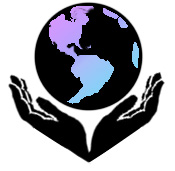The Feminist Diversifying, Unifying, Globalizing Process
created by: Jasica Chiang & Sophie Wang

"Feminism in one country is not sustainable -- we need feminism on a global scale."
- Women in Development Europe, 1995
The Feminist Diversifying, Unifying, Globalizing Process created by: Jasica Chiang & Sophie Wang
|
| History: A Narrative
Much of the global feminist process is expressed through transnational feminist networks, which emerged in the mid-1980s. The question of why then is made clear given the context of the overall women's movement [1]. In the early 1960s, in the beginning of the movement, the expansion of women's groups were still mostly nationally based and nationally oriented. Divisions also existed in terms of regions - for example, North-South, East-West, and First World-Third World differences existed between feminists in terms of their goals and the kinds of issues that they pursued. The main debates responsible for these divisions revolved around whether or not equality and sexuality issues were more important than political or economic issues - should women be more focused upon bringing gender related topics into the political sphere, or should women be more interested in bringing more politics into feminist discussion? In the mid-1980s, three critical economic and political developments made it possible for a shift in how the global women's movement approached organization and mobilization:
As a result of these factors, it made sense for the women's groups in the world to form a number of transnational feminist networks in order to come together to combat the economic pressures and patriarchal threats. Since the 1980s, these networks have expanded to include issues of human rights and social development, and have proliferated in recent years as well. [2] |
History -- A Timeline
1960s: Women’s movement; the second wave begins in North America and Europe 1975: First world conference on women takes place in Mexico City 1980: Second world conference on women takes place in Copenhagen. Mid 1980s: Transnational feminist networks such as DAWN, WIDE, WLUML, SIGI emerge in the mid-1980s 1985: The third United Nations world conference on women that takes place in Nairobi, Kenya. 1990s: WEDO and AWMR emerge 1993: TFN lobbying leads to the insertion of items such as the assertion that violence against women was an abuse of human rights in the Vienna Declaration of Conference on Human Rights (9) 1994: International Conference on Population and Development (ICPD) takes place 1995: Social Summit; Fourth World Conference on Women takes place in Beijing 1997: Thirteen countries in Central and Eastern Europe form KARAT coalition for Region Action. 1997: Eighth International Women and Health Meeting in Rio de Janeiro issues the Gloria Declaration |
References: [1] Valentine M. Moghadam. Globalizing Women: Transnational Feminist Networks. Baltimore: The Johns Hopkins University Press, 2005. pp 19-20. |
|